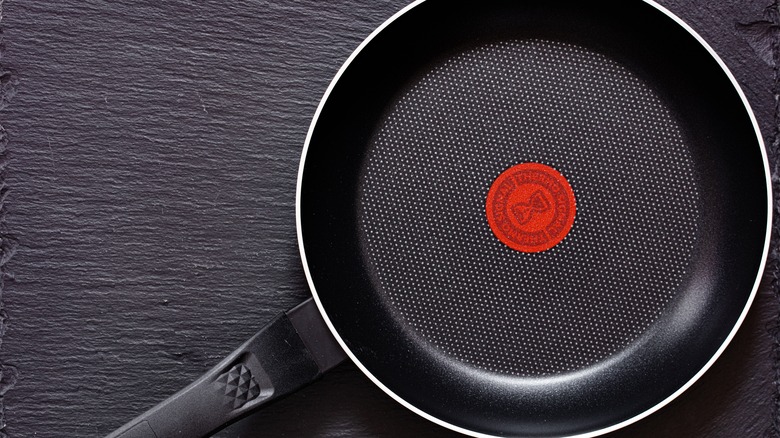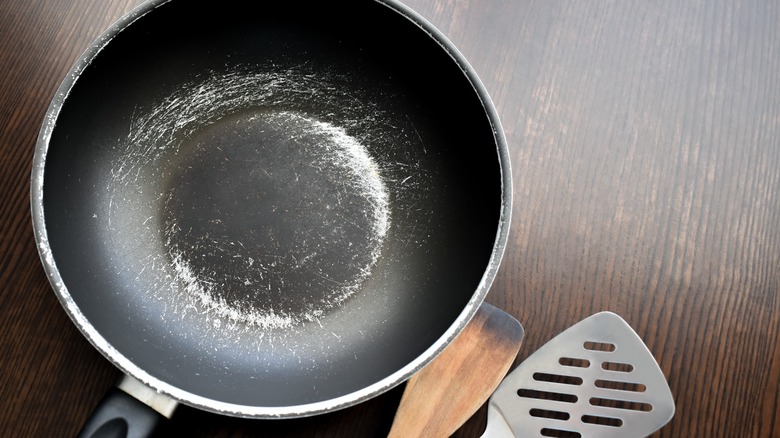The Telltale Sign That Your Nonstick Pans Are Finished
One of the trickier cooking tools to care for and deal with is nonstick pans. They offer some truly magical properties that make them easy to clean and convenient, but there is a lot of understandable concern about wear and tear. Nonstick pans get their magic from Teflon, a chemical coating used in all sorts of applications for its nonreactive properties.
Prior to 2013, Teflon was made with perfluorooctanoic acid (PFOA), which was linked to some serious health side effects, per Healthline. Nonstick pans are no longer made with that compound, and cooking with Teflon is safe under normal circumstances, but it can break down, which is why it's best to keep an eye on the condition of your pan.
There are a few different ways nonstick pans can show their age, which means you should stop using them. The most obvious sign is any peeling of the surface or flaking of the coating during cooking. Beyond limiting the nonstick usefulness of the pan, this means you are at risk of ingesting Teflon and should toss your pan for good. The same goes for scratches, which might not be as obvious, but larger ones can produce the same risks as peeling. Even without concern over chemical ingestion, these defects are symptomatic of an old nonstick pan and signal that you should start thinking of a replacement.
Nonstick pans can start to flake off their chemical coating
If you really love your nonstick pan, then you should be fine replacing it with another one as long as you take good care of it, but stay vigilant for those signs of wear. That means not just peeling but also a darkly discolored or dry coating, which are further signs the surface could be permanently damaged. And depending on how much you use your pan, it's best to replace it every five years or so.
But if you want to try something new, a good alternative is ceramic. Nonstick ceramic pans do have the downside of a shorter useful life, but they work just as well as Teflon in most applications and are nontoxic on top of that (via Bob's Red Mill). Your other option is cast iron, which never quite reaches the nonstick levels of the other pans but can stand in for them when well-seasoned and cared for. All in all, you have choices when it comes to nonstick, but none of them come without some level of care or wearing down.

